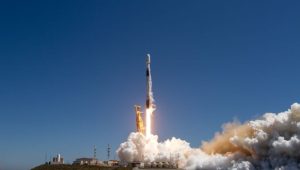Scientists at Nasa are testing a new technology that can predict a tsunami with the help of disturbances they create in the Earth’s atmosphere.
According to Nasa, the new technology called Guardian (GNSS Upper Atmospheric Real-time Disaster Information and Alert Network) is a hazard-monitoring technology. It uses data from GPS and other satellites to detect real-time positional accuracy down to a few inches, said the scientists at the Jet Propulsion Laboratory (JPL) of Nasa.
The technology is also being tested by Nasa’s team of researchers in the Ring of Fire in the Pacific Ocean. It is an area where about 78 percent of more than 750 confirmed tsunamis occurred between 1900 and 2015.
Tsunamis are powerful ocean waves caused by underwater earthquakes, volcanic eruptions, or landslides. The new system is under development to boost early warning systems by sifting the signals for clues that a tsunami has arisen somewhere on Earth. On the occurrence of a tsunami, the system monitors the displaced air and the charged particles that collide with the ionosphere.
A wide area of water surface may rise and sink almost concurrently during a tsunami, displacing a considerable amount of air above it, say the researchers. As it moves outward, the displaced air crashes into the atmosphere, sending low-frequency sound and gravitational waves in all directions. The ensuing collision of charged particles and pressure waves might distort the signals from navigational satellites nearby, and so can be used as a lifesaving alarm bell.















